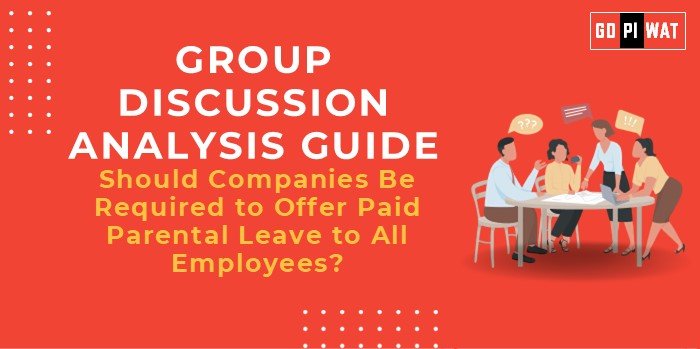🌍 Should Companies Be Required to Offer Paid Parental Leave to All Employees?
🌐 Introduction to the Topic
Parental leave policies have increasingly become a global discussion point, as they directly impact workforce equality, employee satisfaction, and economic productivity. Paid parental leave ensures that employees can care for their families without financial distress, fostering inclusivity.
Countries like Sweden, Germany, and Japan have well-established parental leave systems that include both maternal and paternal benefits. However, in many developing economies, including India, parental leave is inconsistent and often limited to maternal benefits in private sectors. The debate on mandating paid parental leave for all employees raises ethical, economic, and organizational implications.
📊 Quick Facts and Key Statistics
- 🌍 Global Paid Parental Leave Average: 29 weeks (World Bank, 2023).
- 🇮🇳 India: Paid maternity leave of 26 weeks under the Maternity Benefit Act; limited or no paid paternity leave in private sectors.
- 🇺🇸 USA: No federal paid parental leave; companies provide voluntary benefits.
- 📈 Economic Impact: Paid parental leave improves workforce retention by 90% (OECD Report).
- 🤝 Employee Satisfaction: 81% of employees prefer companies offering paid parental leave (Deloitte 2023 Survey).
🏢 Stakeholders and Their Roles
- 🏛️ Government: Formulating policies to promote equitable parental benefits and ensure compliance.
- 👨💼 Employers: Designing paid parental leave frameworks, balancing employee welfare with productivity.
- 👩💻 Employees: Benefiting from paid leave for improved work-life balance and family care.
- 🤝 Labor Unions: Advocating for uniform leave policies across sectors.
- 🌏 International Bodies: Setting benchmarks through examples like the ILO parental leave conventions.
🌟 Achievements and Challenges
✔️ Achievements
- ⚖️ Improved Gender Equality: Parental leave encourages shared caregiving responsibilities, reducing gender biases.
- 🔄 Higher Employee Retention: 94% of employees return to work post-leave in companies offering paid benefits (McKinsey Study).
- 📈 Increased Productivity: Healthier work environments lead to better mental health and output.
⚠️ Challenges
- 💰 Financial Burden on Employers: SMEs may struggle with additional costs of paid leave.
- 📏 Policy Gaps: No standard regulations across private sectors in developing countries.
- ❌ Bias Against Hiring Parents: Employers may avoid hiring potential parental leave beneficiaries.
🌍 Global Comparisons
- 🇸🇪 Sweden: 480 days of paid parental leave shared equally between parents.
- 🇺🇸 USA: No federal mandate, but progressive firms like Google offer 18 weeks of paid parental leave.
📚 Case Studies
- 🇮🇳 SAP India: Offers 20 weeks of paid maternity leave and 6 weeks of paternity leave, resulting in higher retention rates and improved employee satisfaction.
- 🇪🇪 Estonia: Recognized for the world’s best parental leave policy, with up to 1.5 years of paid benefits.
💬 Structured Arguments for Discussion
- ✔️ Supporting Stance: “Paid parental leave ensures better employee retention, promotes gender equality, and supports healthier families, all of which boost workplace productivity.”
- ❌ Opposing Stance: “Mandatory paid parental leave can burden small businesses financially and lead to discriminatory hiring practices against parents.”
- 🤝 Balanced Perspective: “While paid parental leave has economic costs, its long-term benefits in workforce stability and gender balance outweigh the initial challenges.”
🎯 Effective Discussion Approaches
📈 Opening Approaches
- 📊 Data-Driven Start: “Studies show that companies offering paid parental leave have 30% higher retention rates compared to those that don’t.”
- 📖 Case Study Start: “Estonia’s parental leave model showcases how progressive policies can create family-friendly workplaces without hampering productivity.”
🔄 Counter-Argument Handling
- ⚠️ Argument: “Paid leave adds financial stress on companies.”
- ✔️ Rebuttal: “Governments can subsidize SMEs, as seen in Sweden’s successful co-funded leave policies.”
📊 Strategic Analysis of Strengths and Weaknesses
- 💪 Strengths: Enhances work-life balance, boosts employee morale and retention.
- 📏 Weaknesses: Financial strain for SMEs, possible misuse of leave policies.
- 🚀 Opportunities: Government-private partnerships to share costs, attracting global talent through progressive benefits.
- ⚔️ Threats: Resistance from employers, economic downturns impacting affordability.
📈 Connecting with B-School Applications
📚 Real-World Applications
- 📋 Projects on policy impact analysis in HR management.
- 📊 Case studies of global parental leave success for organizational behavior research.
💬 Sample Interview Questions
- 🤔 “How can companies balance employee welfare with financial sustainability in offering paid parental leave?”
- 📖 “What can India learn from Sweden’s parental leave policies?”
💡 Insights for B-School Students
- 🌟 Focus on HR innovation through inclusive leave policies.
- 📖 Explore how progressive workplaces retain diverse talent.


